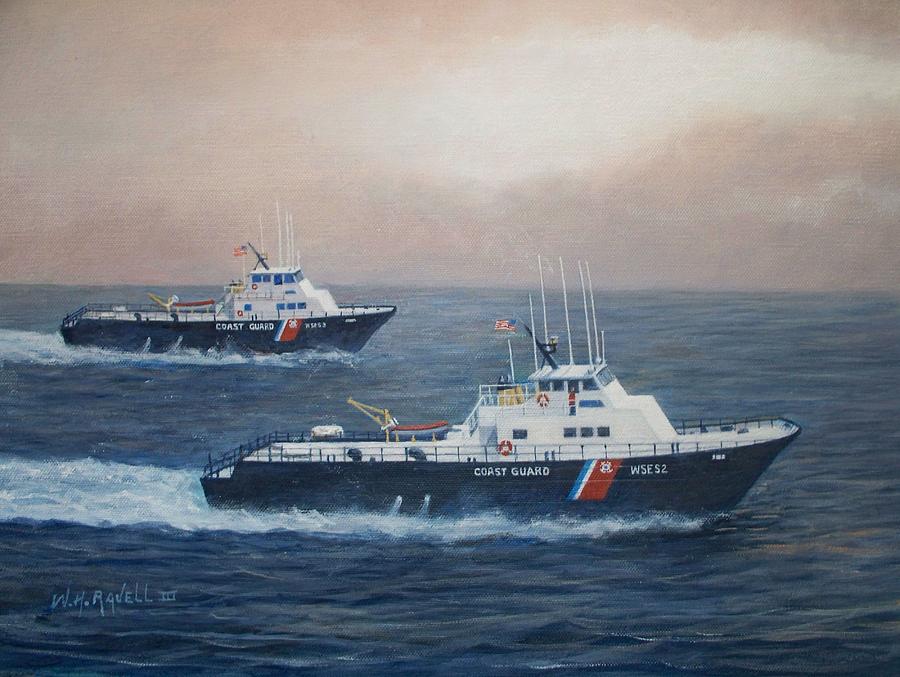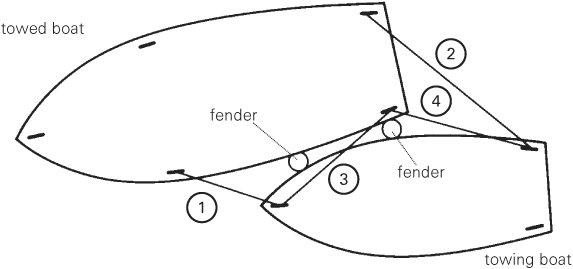We do not have any towing companies (BoatUS for example) in our area so in the past I’ve towed about 1-2 boats a year that have run out of gas, had the engine quit or for some other reason. Since we bought Beachcomber we tend to go to out of the way places so lately we haven’t towed anyone. Over the years I’ve come up with some good things to be aware of when towing another boat to make it safer for everyone involved. Here’s a few items in no particular order….
-The boat to be towed should transfer all of it’s passengers to the tow boat except for the skipper of the towed boat. Everyone on both boats should don a PFD. This lightens the load in the towed boat and makes it easier to tow.
-The line to the towed boat should be fastened to the bow eye, or as low as possible on the boat to keep the bow high. (this might apply more to smaller boats than the ones we have)
-The tow line should be long enough that when the tow boat stops or slows, the towed boat has time to come to a stop so it doesn’t run into the tow boat.
-It’s best to use a heavy line that has some ability to stretch and absorb any shocks but not an unlimited amount of stretch. See next suggestion.
-It’s a good idea to tie a towel or PFD about midway down the tow line. This way if the line breaks it won’t be as likely to snap back into either boat and injure someone.
-Hand signals between the tow boat and towed boat should be the same as for water sports, and should be clarified before starting the tow. A better bet might be VHF or cell phone communication if possible.
-For better control of the towed boat, before approaching a dock it should be brought alongside the tow boat and fastened to the side as it would be in rafting up.
-There should be a clear plan for what to do when you reach your destination. Should the other boat side tie to you, etc?
-Weight distribution in the tow boat is critical. You don’t want everyone seated in the stern unless there’s nowhere else available.
-The tow line should be fastened to the tow boat using a bridle attached to two cleats if possible.
-On an I/O boat that is to be towed the lower units should be raised about half way. You want them in the water enough to still help with steering but high enough to minimize drag.
This list is certainly not a complete one so does anyone else have any ideas?
-The boat to be towed should transfer all of it’s passengers to the tow boat except for the skipper of the towed boat. Everyone on both boats should don a PFD. This lightens the load in the towed boat and makes it easier to tow.
-The line to the towed boat should be fastened to the bow eye, or as low as possible on the boat to keep the bow high. (this might apply more to smaller boats than the ones we have)
-The tow line should be long enough that when the tow boat stops or slows, the towed boat has time to come to a stop so it doesn’t run into the tow boat.
-It’s best to use a heavy line that has some ability to stretch and absorb any shocks but not an unlimited amount of stretch. See next suggestion.
-It’s a good idea to tie a towel or PFD about midway down the tow line. This way if the line breaks it won’t be as likely to snap back into either boat and injure someone.
-Hand signals between the tow boat and towed boat should be the same as for water sports, and should be clarified before starting the tow. A better bet might be VHF or cell phone communication if possible.
-For better control of the towed boat, before approaching a dock it should be brought alongside the tow boat and fastened to the side as it would be in rafting up.
-There should be a clear plan for what to do when you reach your destination. Should the other boat side tie to you, etc?
-Weight distribution in the tow boat is critical. You don’t want everyone seated in the stern unless there’s nowhere else available.
-The tow line should be fastened to the tow boat using a bridle attached to two cleats if possible.
-On an I/O boat that is to be towed the lower units should be raised about half way. You want them in the water enough to still help with steering but high enough to minimize drag.
This list is certainly not a complete one so does anyone else have any ideas?




